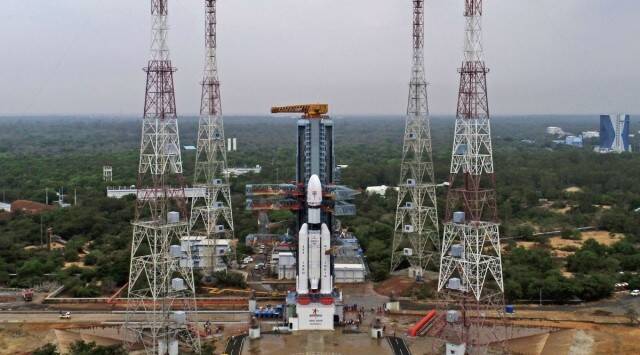The Indian Space Research Organization’s (ISRO) LVM-3 launched 36 OneWeb satellites into orbit on Sunday, completing the first-generation constellation and allowing the UK-based company to begin global coverage this year. Sunday’s launch was the sixth for India’s heaviest rocket LVM-3, which also launched Chandrayaan-2 in 2019 and was the second time it demonstrated the capability of launching multiple satellites into low-Earth orbit.
The 36 satellites were launched into orbit in nine batches of four each. The satellites weighed a total of 5,805 kg.
The first batch of satellites was injected into orbit just over 19 minutes after lift-off, following the burn of all three stages of the rocket, which took the satellites to a 450-km circular orbit. The fourth batch was placed in orbit at around 33 minutes after lift-off.
The other five batches were launched into orbit when Indian ground stations were not focused on the craft. The launch of all satellites was later confirmed when ground stations received on-board data after a 43-minute blackout period.
In addition, the satellites were placed in a lower 450-km circular orbit in the current mission, as opposed to the 600-km orbit used in previous missions. As a result, the satellites were traveling faster at launch. This is a challenge for the mission because the separation must be done in such a way that the satellites do not collide.
Sunday’s launch was Isro’s second for the UK-based company, which is backed by the UK government and India’s Bharti. To provide high-speed, low-latency global connectivity, the company plans to use 588 active satellites in 12 rings of 49 satellites each, with each satellite completing a full trip around the Earth in 109 minutes, in its first-generation constellation.
This was the 18th OneWeb satellite launch, and the third this year, bringing the total number of satellites in the constellation to 618.
“OneWeb already has connectivity solutions active today in key geographies across the globe and is bringing new areas online. OneWeb’s high-speed, low-latency solutions will help connect communities, enterprises, and governments around the world, demonstrating the unparalleled potential of LEO (low earth orbit) connectivity,” the company said in its release. It added, “Across India, OneWeb will bring secured solutions not only to enterprises but also to towns, villages, municipalities and schools, including the hardest-to-reach areas across the country.”
After the launch of the 16 satellites visible from Indian ground stations, ISRO
chairperson S Somanath said in his address, “I am very happy today for the consecutive successes of the LVM-3 and want to thank NSIL (Isro’s commercial arm) for bringing this opportunity to us and also for the confidence OneWeb India has on ISRO for this launch.”
He also thanked the Isro team for making the rocket a reliable one; none of the six missions using the rocket have failed. “Once again, the mission demonstrated the rocket’s capability of placing large, heavy satellites into the right orbit without any glitch. We look forward to engagement with commercial partners for making this rocket one of the best in this class.”
The heavy launch vehicle made its commercial debut in October of last year, launching the first batch of 36 OneWeb satellites. India has been focusing on increasing its share of the global commercial space market since opening the space sector to private players in 2020. Despite being one of the major space-faring nations, India currently accounts for only 2% of the commercial market.
Source:IE







 Finance
Finance







